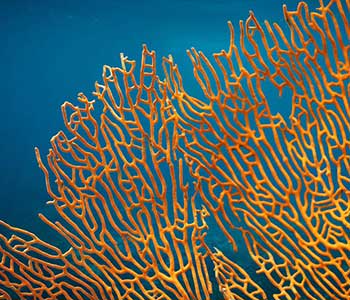
Good sun protection, bad sun protection
Jumping into cool water, probably the most delicious refreshment on hot days. Against the scorching sun on land, it is essential to apply sun protection. This is also done dutifully by countless people who jump into the sea, lakes, rivers and pools every day. Unfortunately, the lotions are washed off and remain in the water, where most of them cause great damage. To the water itself, to the fish, other living creatures and corals. But not all sunscreens are equally harmful, none are really good. Here's a quick look at what to look out for.
July 2022
Quicktranslation with DeepL
Life remains complicated. Whereas in the past it was simply: "Put on some good sunscreen!", nowadays there are a whole lot of things to consider when it comes to sun creams. Sun protection factor, allergens, organic and mineral UVA and UVB filters, fragrances and preservatives. Some substances have hormonal effects, some contain nanoparticles - which are said to be harmless - but it is not known whether they will penetrate damaged skin. Some components, such as the UV filter octocrylene from fossil raw materials, can even have a carcinogenic effect when superimposed. And almost all of them are washed off in the water, with negative effects. Some of them are even said to contribute to coral bleaching and the death of these increasingly rare sessile colony-forming cnidarians.
On particularly hot days, you can sometimes even see this oily film on the surface of the water. It is the sun lotions and sun oils that are carried into the water by the many bathers. For some time now, research has been conducted into the effects of our sun protection on water bodies and their inhabitants:
- It can impair the growth and photosynthesis of algae.
- It can cause defects in young mussels.
- It can negatively affect fertility and reproduction in fish.
- It can accumulate in the tissues of corals, contribute to their bleaching, destroy their DNA and kill them.
- It can affect the immune system of sea urchins, dolphins and other aquatic life and cause damage to their young.
The National Ocean Service therefore strongly recommends avoiding these substances in sunscreen: Oxybenzone, Benzophenone-1, Benzophenone-8, OD-PABA, 4-Methylbenzylidene camphor, 3-Benzylidene camphor, Nano-Titanium dioxide, Nano-Zinc oxide, Octinoxate and Octocrylene.
Some island states have already introduced laws that ban these substances - often, unfortunately, only partially. The strictest law is currently that of the Pacific island of Palau, and the most lax is probably that of Hawaii. More on this below. You are on the relatively safe side with ecological sun creams. But not always, because titanium oxide, one of the mineral filters approved for this purpose, is suspected of being carcinogenic. So you have to take a closer look, and the recommended app CodeCheck does the job for you. One recommended product, for example, is the Lavera Sensitive Sunspray 30.
Many sun creams now state that they do not contain octocrylene and are therefore "reef safe". Of course, this is far from sufficient and is mainly for marketing purposes. This also applies to the Hawaii Reef Compliant Act, which bans just two substances.
What harms oceans is also not good for our rivers and lakes. And even the water in the pool at home is contaminated with it, is eventually drained and ends up in nature, in the groundwater or in the canal. The toxic substances remain in the cycle. So let's take a closer look when we protect ourselves from the sun.




